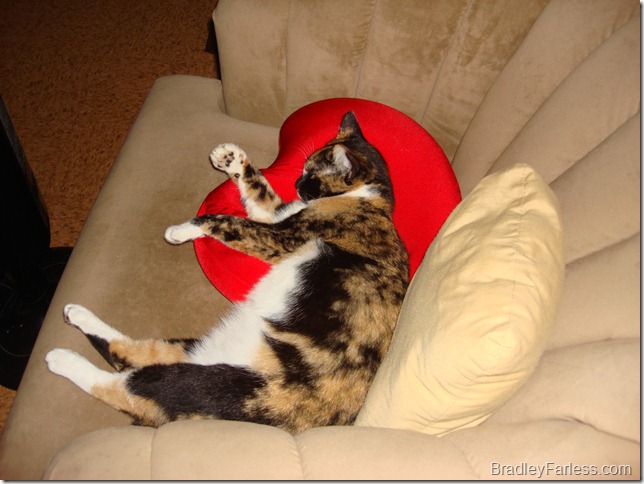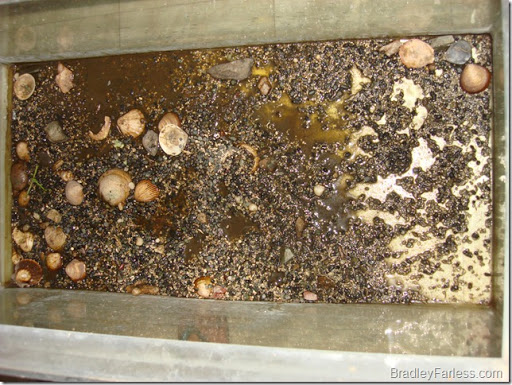My wife and I went out walking around in Winter Storm Jonas for a while, just to see what the blizzard was doing to the city. The last time there was a storm like this, we stayed indoors and by the time we went out, there was nothing left but slush and those crappy puddles on the corners that you have to wade through to cross the street.
When we went out, the snow was still coming down really hard, but it was supposed to snow well into the night, so that wasn’t surprising. It was oddly quiet outside, besides the wind. There were more people out than we expected, but the neighborhood was mostly deserted. Even Starbucks was closed. We didn’t expect anything to be open. We just wanted to have a look around. I was pretty surprised to see a few stores open and some people trying to deliver food. Gristedes was open. It looked like Famiglia was open. I saw two guys come out carrying delivery bags. They ran to a car though and drove off so I’m not sure if they were trying to do a delivery or leave for the day. One of the guys was the franchise owner. I recognized him from when they were moving and renovating the store.

There was a delivery guy trying to ride his bicycle through the snow in the road at 168th Street and St. Nicholas Avenue, but he wasn’t really doing too well and gave up. I watched him get off his bike and then start pushing it through the snow. There were no snow plows on the roads keeping them clear, or if there were they weren’t doing the job well enough because of the rate of snow accumulation. I felt bad for the guy.
https://twitter.com/BradleyF81/status/691399208885207044
After we took some pictures we decided to go grab a few things from Gristedes. It was fun walking inside, covered in snow and I took some time to warm my hands by the rotisserie chicken display. When we left the store, we saw a dog sitting there in the snow, tied to the guard around the bottom of the tree. I was pretty concerned. The dog had a layer of snow on its fur and it was holding one paw up. The dog was obviously uncomfortable and didn’t want to stand in the snow. He was angry and barking. We couldn’t leave until we knew the dog was okay. Other people walking by kept commenting that they couldn’t believe someone left the dog like that. People inside Gristedes were looking out the window at the dog. A guy walked out of Gristedes and said he’d seen the dog sitting there when he went into the store about 10 minutes prior, so me and the guy went inside to look for the owner.
It’s too much, you know? Leaving a dog out there, tied up with snow falling on him. So, I went inside and yelled out, “Does anyone here own the dog that is tied to the tree outside? It’s been there for more than 10 minutes. That’s really inhumane! If you don’t get your dog I’m going to call the police!” When people realized a dog had been left outside in the blizzard, a few people started to comment angrily on the situation. No one acknowledged that they owned the dog, so I walked further back into the store and yelled, “If someone owns the dog that has been tied up to the tree outside for more than 10 minutes, you need to go get your dog and take him home. It’s inhumane to leave a dog outside in a blizzard and I’m going to call the police. Also, you’re an asshole!” Because really, you have to be an asshole to leave the dog tied up outside, exposed to weather conditions so severe. This was the second worst blizzard the city has ever had and the wind chill brought the temperature down to about 14° F.
While I was doing this, my wife and another woman untied the dog and brought him under the shelter of the canopy along the edge of the building. The dog was visibly relieved. By the time I got back outside, the owner had run out there to take the dog home. I hope she doesn’t do it again. I wonder if I should have just called the police and/or animal control anyway? What if this is normal for this person?
Anyhow, it was sort of a damper on the fun we were having, but we were glad we saved the dog from a bit of suffering he might have otherwise experienced if we had chosen not to go out, or not stop. We also enjoyed the adventure of walking around out in the blizzard. We were going to try to do our laundry today, but it just didn’t happen. I looked at the news about how the transit system wasn’t even up and running around noon today, so we just did some cleaning around the house and I’ll have to do the laundry tomorrow night after I get home from work. By then, shop owners should have salted the sidewalks and everything should be open. It would have been really disappointing to haul laundry through snow drifts to the laundromat only to find out it wasn’t open.
We never lost power or heat or any other service, so it was a pretty cozy, awesome kind of weekend, mostly holed up at home watching TV and staying warm. I have my snow boots ready for tomorrow.





















































































